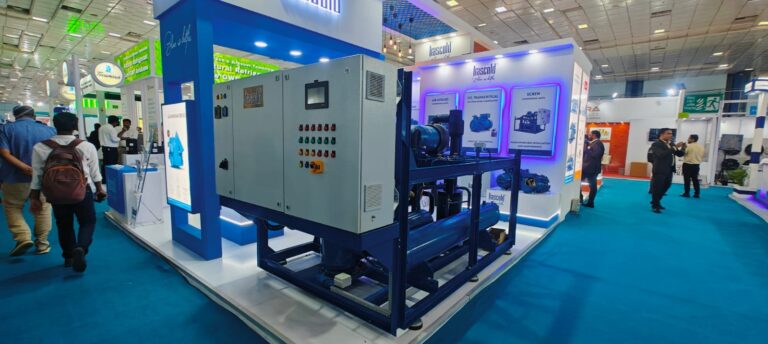Chiller Safety Measures
Introduction:
Chillers are basic components of HVAC systems and industrial forms, but they also pose certain safety risks in the event that not worked and kept up appropriately. Chiller Safety Measures : In this blog post, we’ll talk about basic safety measures for chiller operations and support, highlighting best practices to guarantee the security of work force and equipment.
Proper Installation and Location:
- Guarantee that chillers are introduced in well-ventilated areas with satisfactory clearance for airflow and maintenance get to.
- Take after producer suggestions for installation, counting legitimate anchoring, electrical associations, and channeling installation.
- Dodge placing chillers close combustible materials or in areas inclined to flooding or natural hazards.
Electrical Safety:
- Follow to electrical security guidelines and controls when introducing, servicing, or working chillers.
- Guarantee that electrical components are appropriately grounded and secured from moisture and contaminants.
- Conduct standard reviews of electrical associations, wiring, and components to identify and address any potential hazards.
Refrigerant Handling and Management:
- Prepare personnel on secure taking care of procedures for refrigerants, including proper capacity, charging, and leak location.
- Utilize suitable personal protective equipment (PPE) when working with refrigerants, such as gloves, goggles, and respirators.
- Actualize a refrigerant administration program to track refrigerant usage, spill rates, and compliance with regulations such as the EPA’s Refrigerant Administration Program.
Pressure and Temperature Monitoring:
- Introduce pressure and temperature sensors on chillers to monitor working conditions and distinguish abnormalities.
- Actualize programmed shutdown systems or alarms to alert personnel to possibly dangerous conditions, such as tall pressure or temperature levels.
- Frequently inspect and calibrate weight and temperature sensors to guarantee precision and reliability.
Emergency Response Planning:
- Create and communicate clear strategies for reacting to chiller-related emergencies, such as refrigerant leaks, electrical faults, or overheating.
- Prepare personnel on emergency response conventions, including clearing methods, first help, and equipment shutdown methods.
- Maintain emergency reaction kits and supplies close chiller installations, counting fire extinguishers, spill containment materials, and emergency contact data.
Regular Maintenance and Inspections:
- Establish a comprehensive support program for chillers, counting routine assessments, cleaning, and lubrication.
- Plan standard preventive support tasks, such as channel replacement, coil cleaning, and refrigerant leak checks.
- Keep detailed records of maintenance activities, hardware inspections, and security audits to track compliance and recognize potential issues.
Conclusion:
By implementing these safety measures, chiller administrators and support work force can moderate risks, prevent accidents, and guarantee the safe and dependable operation of chillers. Prioritizing safety not as it were protects personnel and gear but moreover contributes to generally operational proficiency and regulatory compliance.


